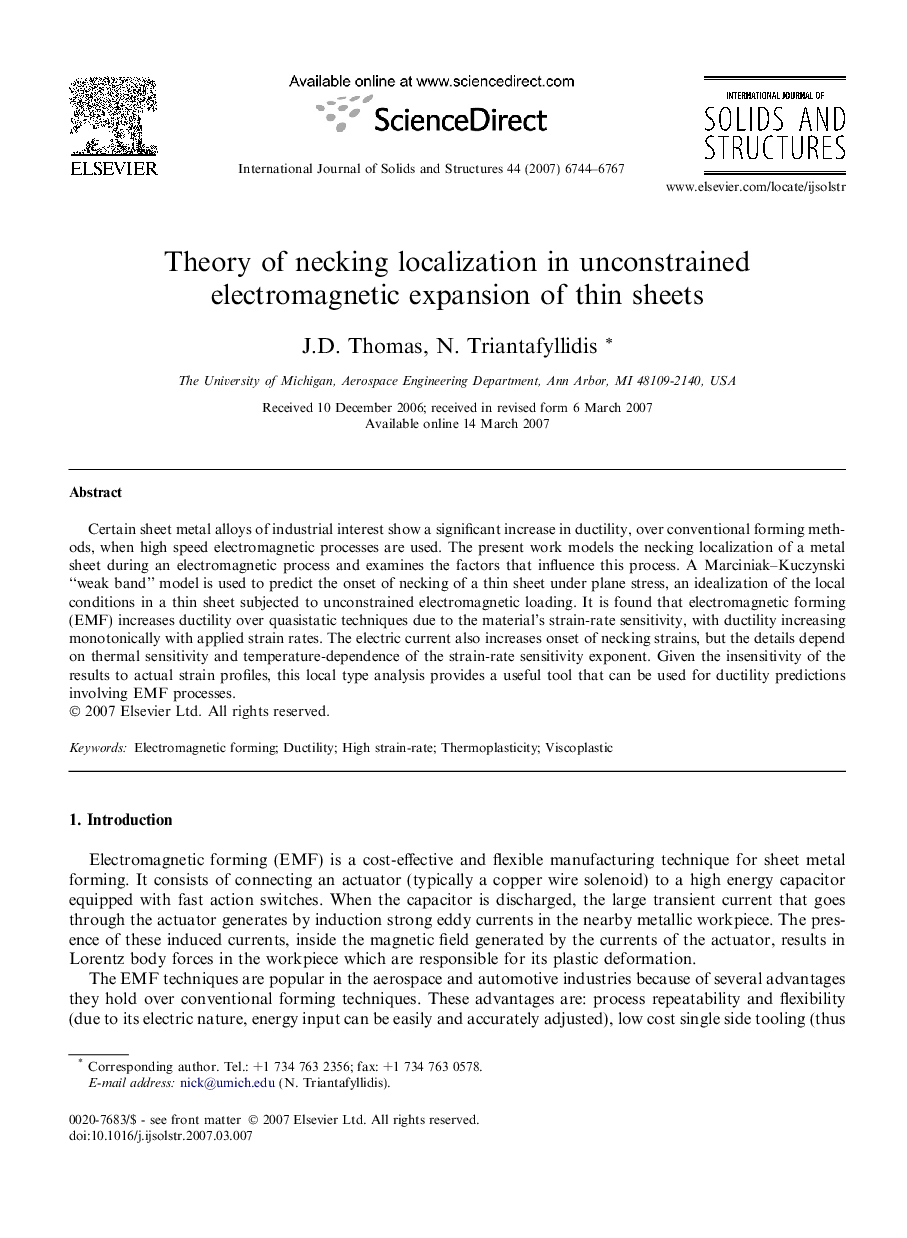| Article ID | Journal | Published Year | Pages | File Type |
|---|---|---|---|---|
| 280077 | International Journal of Solids and Structures | 2007 | 24 Pages |
Certain sheet metal alloys of industrial interest show a significant increase in ductility, over conventional forming methods, when high speed electromagnetic processes are used. The present work models the necking localization of a metal sheet during an electromagnetic process and examines the factors that influence this process. A Marciniak–Kuczynski “weak band” model is used to predict the onset of necking of a thin sheet under plane stress, an idealization of the local conditions in a thin sheet subjected to unconstrained electromagnetic loading. It is found that electromagnetic forming (EMF) increases ductility over quasistatic techniques due to the material’s strain-rate sensitivity, with ductility increasing monotonically with applied strain rates. The electric current also increases onset of necking strains, but the details depend on thermal sensitivity and temperature-dependence of the strain-rate sensitivity exponent. Given the insensitivity of the results to actual strain profiles, this local type analysis provides a useful tool that can be used for ductility predictions involving EMF processes.
